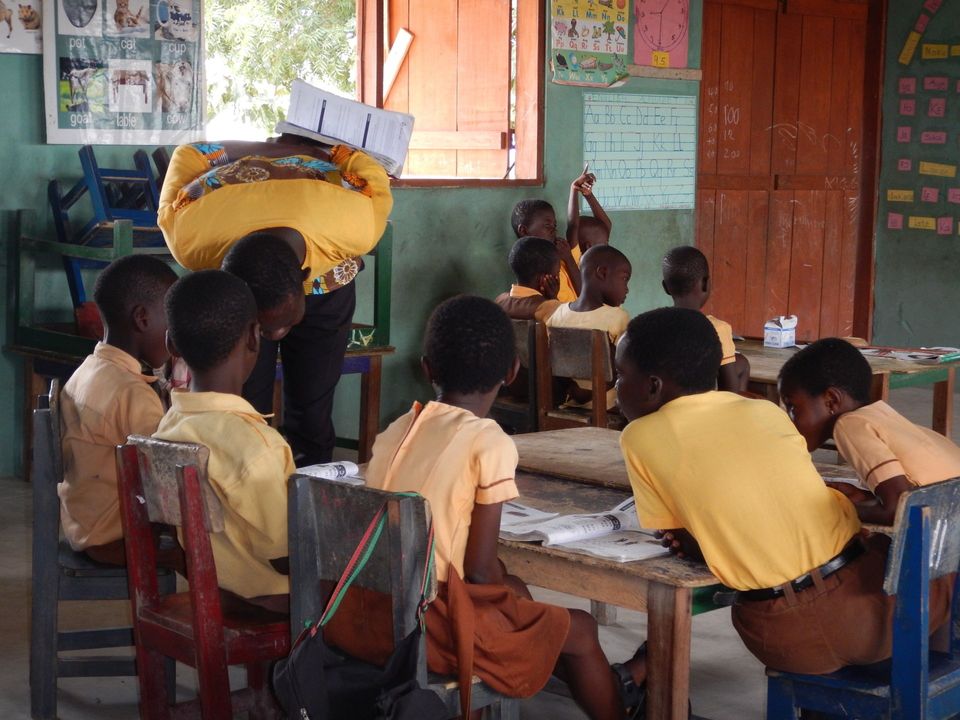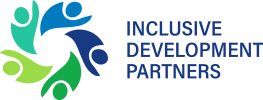Getting Some Inclusion in Ghana

By Dr. Brent Elder, Dr. Samuel Hayford, and Angela Affran
Where else could a research trip related to Universal Design for Learning (UDL) and inclusive education allow you to observe teachers with many barriers to inclusive education developing lesson plans with minimal resources (e.g., using only chalk and chalkboard)? Where could you see a woman with her own infant wrapped to her back, in a classroom without electricity, teaching a lesson that involves 40 students discussing content in small groups while the teacher actively checks for student understanding? Where else can you drink your morning coffee while viewing wild African elephants, have a video conference interrupted by a close encounter with a mischievous baboon, and almost trip over four large warthogs fast asleep directly outside your hotel door? Ghana. That is where all of this happens.
Our research team was tasked with observing 15 P1 (equivalent of first grade) classroom teachers on how they are applying UDL and inclusive education strategies following a training provided by Inclusive Development Partners in partnership with UNICEF in September. Five of the classrooms were in West Gonja in Savannah (northern Ghana), and 10 classrooms were in Ada West in the Greater Accra region. While the locations may be far in distance and geography, there was inclusive education magic happening in both locations.
In the north, there was one superstar teacher who has been a volunteer teacher, meaning not on the Ghana Education Service payroll, for 15 years, and delivered an inclusive lesson packed with UDL principles, that would have impressed even the most seasoned inclusive educator with tons of resources at their fingertips. Aside from this teacher putting students into small collaborative groups, she was using large handmade phonics/letter flashcards that each group of students had at their desks, she was writing in large print on the board, and the students were regularly doing “turn and talks” in their small groups (the list of best practices could go on forever). To top it off, the teacher also had a National Service (NS) person filming her lesson so it can be used to share best practices in UDL and inclusive education to other teachers in Ghana and beyond! To end the lesson, the head teacher (i.e., the principal), who was also observing the lesson, thanked the students at the end for doing such a great job learning. Put simply, with video documentation of this lesson, we now have clear evidence that UDL-informed inclusive lessons can be delivered in classrooms with minimal resources. We found similar results outside of Accra.
While there was a noted lack of elephant sightings in the south, there was not a lack of passionate and effective inclusive educators in Ada West. One teacher, who was teaching a language arts lesson, was like an actor on the Broadway stage. He used different approaches of gestures and voice inflection to keep the students smiling, and had students greeting each other, singing songs together, tracing letters on each other’s’ backs, and whispering the letter sounds to the teacher if they did not want to touch the letter sounds in workbooks. Another teacher, teaching a math lesson on number lines, had his 50 students moving in and out of small groups, working with recycled bottle caps and plastic straws for manipulatives, and was hopping alongside his students on a number line he drew on the floor to show concepts of single-digit subtraction.
Watching these teachers execute brilliantly engaging lessons was like watching scenes from your favorite movie over and over. The vibrant smiles of the students spoke to the reality that inclusion is not just something you can see happening through carefully planned lessons, but it is also something one can feel emanating out of everything and everyone. What was most powerful about watching these master teachers work their magic was that they embody the resourcefulness, resilience, and creativity these teachers have developed over time out of necessity. In these significantly under-resourced schools, we don’t hear facilitators saying, “We don’t have resources to do inclusion.” Instead, we are seeing them do so much with so little, and do it so well. Not only are these emerging practices models for Ghana, they can serve as models for Western countries that have schools that are similarly under-resourced.
